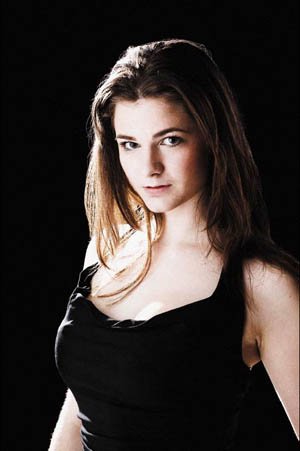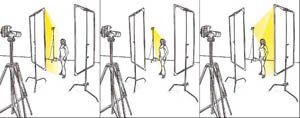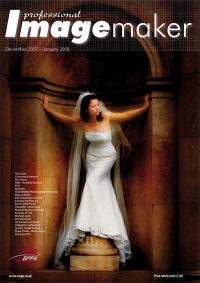articles/Lighting/lightingfordigital5-page1
Digital exposure for photography - part 1 of 1 2 3
by Dave Montizambert Published 01/12/2007

Dave Montizambert searches for optimum digital exposure
We've heard it a million times and here it is one more time: Ansel Adams' golden rule for optimum capture in his B&W Zone System is, 'Expose for the shadows and develop for the highlights'. This makes sense for B&W film where all contrast control can be applied in the darkroom after the exposure. However, it makes no sense with digital capture; if you expose for the shadow you run the risk of pushing the highlight tones over the edge into white without detail. Now once all detail is lost in the highlight, and I mean really lost - 255 levels in all three channels - there is nothing to work with, no chance of rescue with Lightroom or Adobe Camera RAW's highlight recovery slider and, since it is digital, no resurrecting silver halide crystals hiding deep in the emulsion. Furthermore, there is less chance of these fixit methods turning out with images processed 'in-camera' (ie JPEGs) than there is with RAW images processed after the fact in your favourite RAW processing software - in-camera processed JPEGs contain less data than RAW files and so highlight recovery is more unlikely.
With RAW digital files the number of stops from middle grey to pure white is less than the number of stops from middle grey to pure black. In fact where detail in the shadow ends is a matter of some debate, it really comes down to how much noise and banding of tonal gradation you are willing to risk. In addition to this, digital favours the highlight, it assigns more bits to describe the highlight than it does to describe the shadow. Don't know what a bit is? See side bar entitled 'Bits, Bitmap, and Bits Per Channel'

Dramatic backlit lighting: Look at Image [1] of model Sarah Madro. She is illuminated by light reflecting off a 1.3 x 2 metre white nylon fabric stretched over a panel frame placed in front of her on the camera left side of the image frame - see lighting diagram Image [2]. The origin of the light energy for this main light source comes from a strobe/flash mono-block place behind her on the camera left side of the image frame. This light origin also provides heavy dramatic back lighting for Sarah giving her separation from the dark background. I often use this one light dramatic backlit technique indoors on rainy days to simulate outdoor sunlight. To fill in the shadows a second reflector panel was placed to the camera's right side of Sarah, this fill light source caught stray light from the backlight and redirected it onto her dark side. This fill reflector was placed further away than usual to create darker shadows.
Most professional D-SLR cameras today create 12-bit encoded data. 12-bits describe or break down the greyscale into 4,096 discreet steps or levels of brightness. An increase of one digit in bit depth, say from 12- bit to 13-bit, will double the possible levels of brightness. Very recently Canon announced their new 1Ds Mk III that they claim to be 14-bit. If this new Canon is a true 14-bit camera, its captures should have in the neighbourhood of four times more levels of brightness to play with than does a 12-bit camera! See Bit Depth/Tone correlation in Image [7].
A greyscale has pure white at one end and pure black at the other end. In between these two extreme tones we have 4,094 levels of brightness with 12-bit, that is to say that the intermediate tones of the greyscale are broken down into 4,094 separate steps or levels of tone. We are using slight variations in brightness to simulate a continuous tone greyscale and if the steps of that progression are fine enough, we can fool the eye into believing that it is seeing a continuous tone progression.
In fact we don't really even need this many levels to create the illusion, it can be done with considerably less. Your printer dumbs down bit depth to about 6-bits for printing and when you work on your image in Photoshop at 8-bits or when you create a JPEG image, you are only using 256 levels of brightness to describe the whole greyscale. 8-bit is considered low-bit and 10-bit and above is considered high-bit, at any rate more bits equal more levels of brightness which equals more editing head-room - an important factor when processing images as well as correcting, or manipulating, files in Photoshop.
You are currently on page 1
- Digital exposure for photography page 1
- Lighting for Digital 5 page 2
- Digital exposure for photography page 3
1st Published 01/12/2007
last update 09/12/2022 14:55:49
More Lighting Articles
There are 16 days to get ready for The Society of Photographers Convention and Trade Show at The Novotel London West, Hammersmith ...
which starts on Wednesday 14th January 2026





